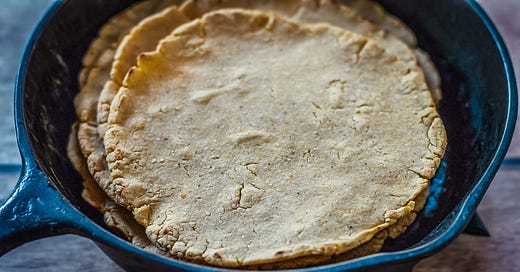This is gonna be a fun blog post! Why? Because I’ll be sharing experiences not only from one country, but from two different countries this time, Nicaragua and Vermont, US.
You’ll see in a minute, what they’ve got in common.
I think I’ve had proper homemade Tortillas for the first time going to Yucatan peninsula, Mexico (now we’re up to three countries actually!) in September 2021.
Until that time I wasn’t aware of how they’re actually made and what type of flour is used for making them. I knew it was made from corn, but I had no clue that by using ground corn kernels you’re not able to make proper Tortillas.
Ground corn will give you either cornmeal or Polenta or more finer ground corn starch.
For the making of Tortillas, and any other Central or South American specialty such as Hominy Grits, Tamales, Tostados, Pupusas, etc. you need Masa or Masa Harina, the dry powder.
But how do you turn corn into Masa (Harina)?
Let’s move a little further North for that. I was introduced into the making of Masa by two very cool young folks in Vermont in the summer of 2023. Evan and Erika, a couple living in Vermont, taught me and some other people how to turn corn into Masa through a process that is called Nixtamalization in a very fun and interesting workshop.
It was a very hands on workshop, where us attendees could actually make their own Masa and then turn that into Tortillas the next day, when we had a Tortilla feast at the end of Day 2 of the workshop weekend.
What is Nixtamalization?
The process of Nixtamalization is an ancient technology for transforming corn’s nutrition, aroma and texture using an alkaline/basic solution such as wood ash lye to make Masa, Hominy Grits and more.
On Day 1 of the workshop the couple showed us how to make the lye first using wood ash and soft water. Densely packed into a bucket the wood ash had to sit for at least 24 hours (up to 5 days) with then the lye eventually dripping out of a hole on the bottom of the bucket.
Even though the wood ash was grey-ish colored, the lye that came out and was dripping in another bucket had a translucent, yet yellow-y color.
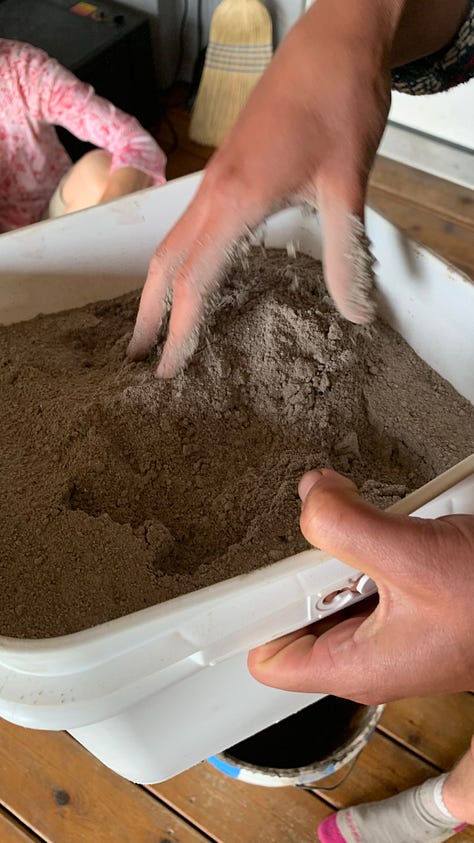
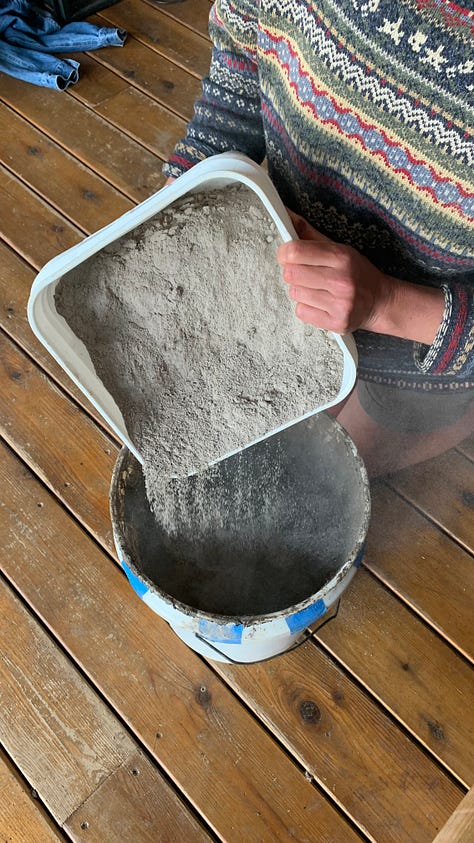
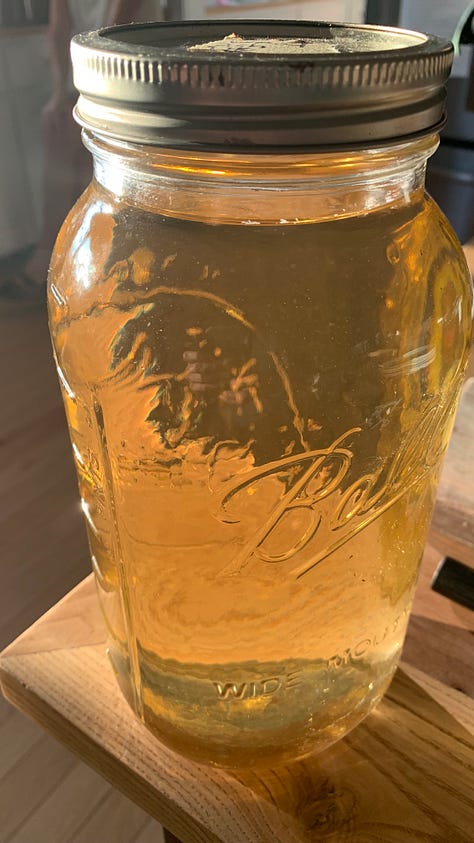
The actual process of Nixtamalizing then used the corn kernels of certain varieties of corn, preferably dents and flour corn they told us, the wood ash lye, some salt and more water.
Bringing all of that to a boil will not only change the color of the corn kernels, but also its texture. We were looking for a chewy consistency here, like an al dente Pasta.
After a resting time of several hours, we had to properly rinse the corn kernels and rinse off some (or all of it) of the skins, the pericarps, and the slimy cooking water liquid, called nejayote.

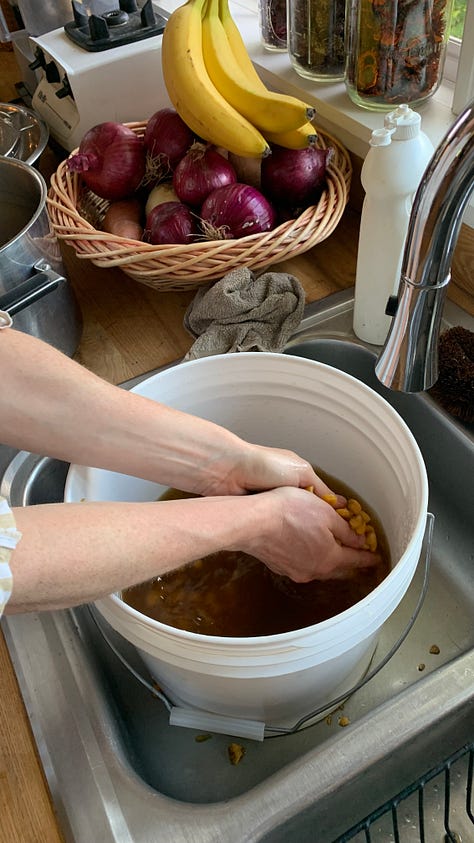
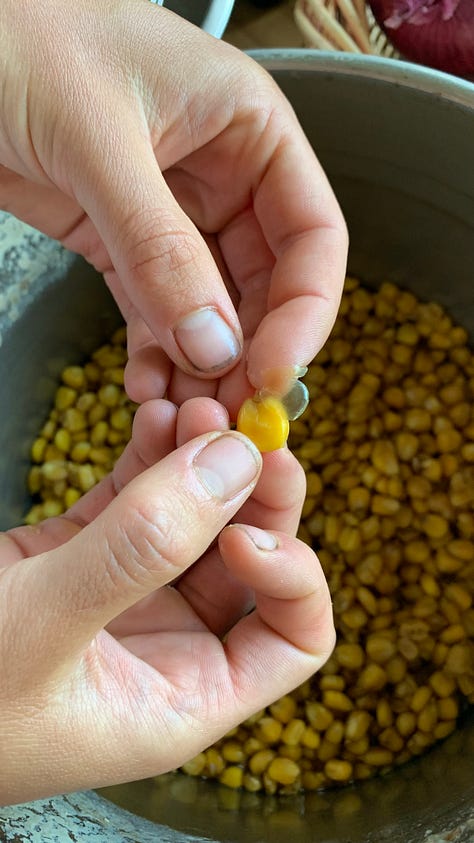
The result after that process is what’s known as Hominy Grits. In some parts of the US (mostly the South) this is part of people’s diet, like a corn porridge. It’s very nourishing and full of nutrients. The Nixtamalization process doesn’t only break down the texture and changes the color of the corn. But also brings out the good nutrients in it.
Now with Hominy Grits you can either wet mill it, which will turn it into Masa (which I got to do as well - quite the laborious process), the dough that’s being used for making Tortillas and Tamales, etc. Or it can be dried and turned into a powder, which is Masa Harina.
Making Tortillas the Nica way
We’re going back several months to March 2023 and a little further South to Matagalpa, Nicaragua.
Between January and April 2023 I was staying in Nicaragua and lived with three wonderful Nica (that’s how people in Nicaragua are being called) ladies - they are all related to each other - in their home. It was kind of like a paid homestay, although I initially booked my stay through Airbnb.
Yet, it felt like like a homestay, since I was living with them, experiencing how they lived and how they ate and what they cooked. And, I got to practice my basic Spanish at that time, too.
And at some point I observed them making Tortillas. From Mexico I knew that many people use a Tortilla press for making Tortillas. Which is super easy to use and makes perfectly shaped Tortillas, too.
Now the Nica way of making Tortillas is slightly more handmade, literally.
You start with making a dough from Masa Harina and water, basically eye-balling the amount of both until you reach a certain consistency that the Nica ladies taught me.
That meant the dough wouldn’t either stick on my hands nor the bowl where I was mixing the dough together. The dough rather was soft and had a certain density to it.
In another recipe that I had found after getting back from Mexico in 2021, the person described the texture as if you’d squeeze your ear lobe. That’s the consistency you’re aiming for with Masa.
Turn Masa into Tortillas
Now, the Nica way of making Tortillas is using a round shaped piece of plastic - they simply cut out a circle from an old plastic bag, used for store bought beans or something, so a more sturdy material than a plastic shopping bag.
This round shaped plastic functioned as the orientation for shaping the Tortillas.
We first started with a small golf ball shaped piece of the dough, pressed it onto the surface of the circular plastic and then used one hand (with an even pressure of fingers and palm) to press and the other hand to turn the plastic surface. Press and turn, press and turn, until the desired size for the Tortillas was reached.
Now, I’m not as skilled as my fellow Nica ladies - they were doing it for years -, so my way of doing this technique is slightly simplified. I usually turn my dough from time to time, that is I’m flipping it on my surface a couple times. Then use the pressure of my palm more then the one of my fingers and the other way around, until I reach the size and shape that I’m looking for.
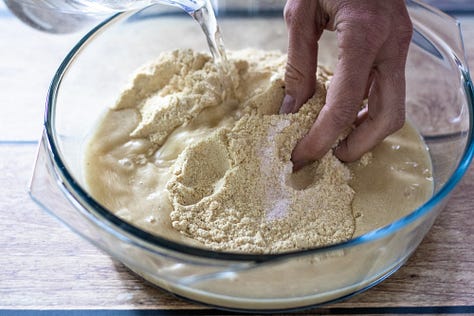
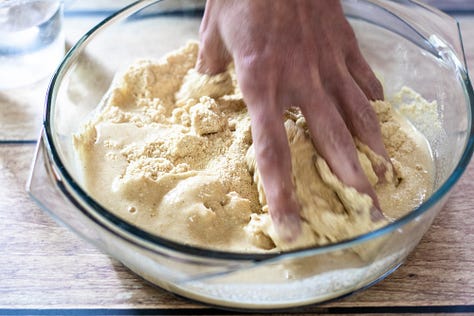
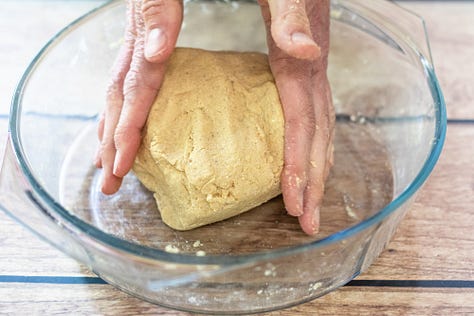
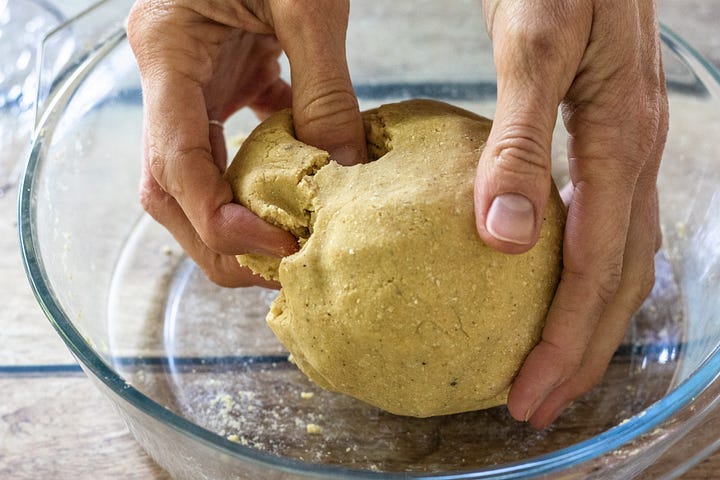
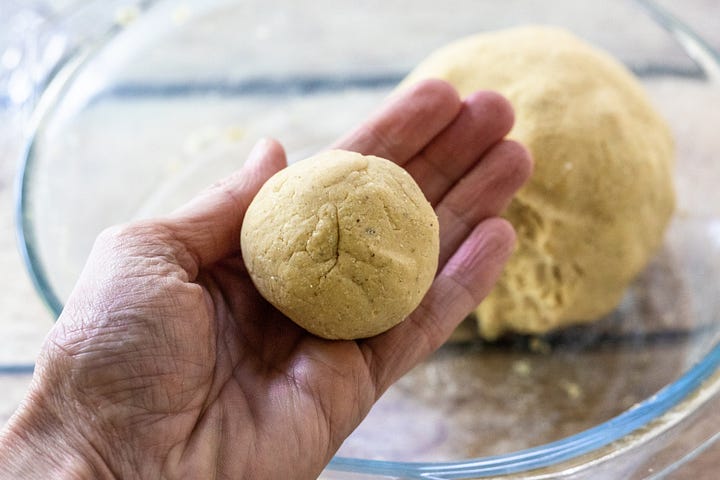
I am also trying to get rid of any spots, where my dough is breaking apart on the edges by smoothing that out with the fingers of my left hand while turning the surface with the soon-to-be Tortilla on it.
Now with the thickness, I think I’m usually at a thickness of approximately 3-4mm (0.1-0.5 inches), maybe slightly less. You’re aiming for a thickness that will yield into an evenly shaped Tortilla that can be used for filling with all sorts of goodness, such as veggies, guacamole, black beans, etc.
My Nica ladies were super fast in making theses handmade Tortillas and I was always in Awe observing them. We’re not in a competition here, though. It takes as long as it takes and until we reach our desired round shaped Tortillas.
One cup of Masa Harina usually yields in making about 10 medium sized Tortillas for me.
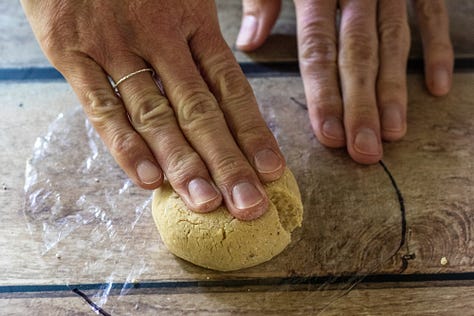
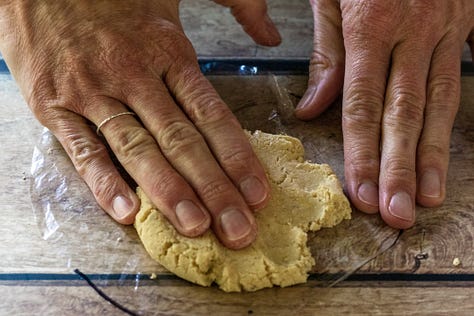

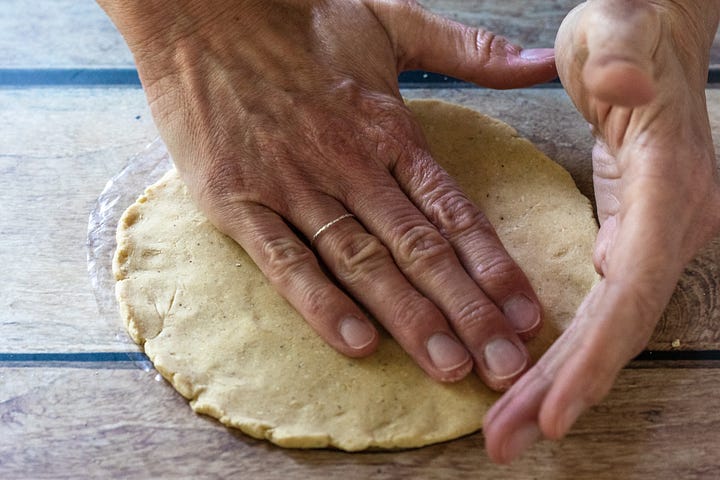

How to cook Tortillas
Cooking the Tortillas is almost the easiest part. You need just a little dash of oil, if any at all, if you’re using a very good pan. Try using one that has about the size of your Tortillas.
Turn your stove top to a medium heat and preheat your pan to a good degree, so you can get started right away.
Put your Tortillas in the pan each at a time, flipping them midway. Check if the underside gets slightly toasted. Then flip. Once your Tortilla starts building big bubbles, it’s done.
But don’t worry, if it doesn’t. Mine don’t always do that, but still are great Tortillas!
In next week’s blog post, I’ll share my favorite Mexican style Tortillas (we’re going back to Yucatan) with you.
I know you can totally buy freshly packaged Tortillas in the grocery store nowadays. But making them yourself is so much more fun and with some practice easily made homemade. And you can be 100% what’s in them, too.

